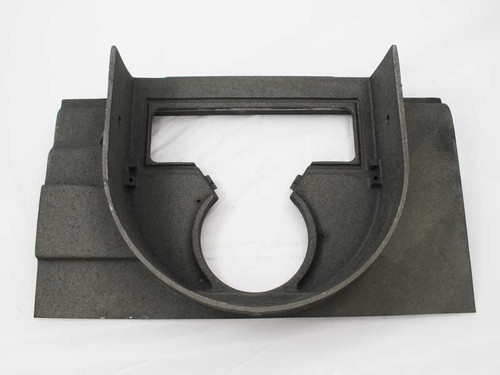I've had a 2461 catalytic stove since new, and the inner lid (basically the top of the firebox) has sagged from the heat. Amazingly, I found a replacement here:

 www.stove-parts-unlimited.com
www.stove-parts-unlimited.com
I am not sure how this cast iron stove is held together, but it looks like I'll have to do some disassembly to replace it. I'm not nervous at all doing it, I'm just not sure how to go about it. Are these things cemented together with refractory cement? Any advice on how to disassemble this thing would be greatly appreciated.

Vermont Castings Inner Top for Dutchwest Large 2461 Stoves (7001119A)
Replacement Inner Top for Vermont Castings Wood and Coal Stoves. Click for model info. Vermont Castings part # 7001119A
 www.stove-parts-unlimited.com
www.stove-parts-unlimited.com
I am not sure how this cast iron stove is held together, but it looks like I'll have to do some disassembly to replace it. I'm not nervous at all doing it, I'm just not sure how to go about it. Are these things cemented together with refractory cement? Any advice on how to disassemble this thing would be greatly appreciated.



![[Hearth.com] How to Disassemble my VC Dutchwest Stove to Replace the Inner Lid](/talk/data/attachments/262/262433-33a3c819d0a4ec18f8feb1bb7c6ed1b4.jpg?hash=r-FKKTFC5G)
![[Hearth.com] How to Disassemble my VC Dutchwest Stove to Replace the Inner Lid](/talk/data/attachments/262/262434-08057e3f048dfa7af0148c6bc08cc604.jpg?hash=so6dakksa0)
![[Hearth.com] How to Disassemble my VC Dutchwest Stove to Replace the Inner Lid](/talk/data/attachments/262/262435-8aaea1700fd6d98d3316b572977ac2fa.jpg?hash=U4vJd7B9J8)
![[Hearth.com] How to Disassemble my VC Dutchwest Stove to Replace the Inner Lid](/talk/data/attachments/266/266083-289e062077eb7323d9bd171c3fdd8375.jpg?hash=yNZU-5TZDW)
